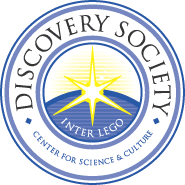Faith Under Fire #2: Creation or Evolution?
Are you prepared to tell a skeptic (or your children) why there must be a God?
Watch (and analyze/scrutinize) this conversation on the Christian concept of God:
Simple Cartoon (about 5 minutes) on the Fine-tuning of our universe (intelligence or chance?):
![]()

I have had the great benefit of working with the Discovery Institute and whom provided the Foreword to my book on The Philosophy of History. The Discovery Institute has led the way in many aspects of Scientific discovery. They have been instrumental in finally challenging the "status quo" that we should "follow the information where ever it leads." I always was curious why when I took evolution, geology, anthropology, philosophy, etc., at a major university, they could not answer any questions I asked concerning, "well where did the matter come from? Or did the stars make the elements, or the elements the stars? Etc., etc.
I would like for you to watch the below videos produced by Discovery Institute and just see why this makes so much more sense, then the "status quo:"
Bar none - the below 3 videos, (from professors from Cambridge, Harvard, Oxford, Princeton, Yale, and many, many more); are the best 3 in my opinion, that shows the facts for Design vs. the weakness of Naturalistic Evolution that has been force fed on me, and countless others at secular universities.
Astronomy/Physics/Probability (just click the below):
Biology/Biochemistry/Molecular Biology:
Part 3 Finale - Agnostic (non-Christian) David Berlinski shares why Evolution is bad science:
If you have watched the above videos, then I encourage you to share it with your family/friends/colleagues, and do not be afraid to challenge "the status quo" of academia. (At the very least, your skeptical friends should be able to give you an explanation for the above, correct?)
On this page:
- Intelligent Design Organizations
- State Based Organizations
- Worldwide Intelligent Design Organizations
- FAQs on Intelligent Design
- Scientists and Scholars
- Blogs Covering Intelligent Design
- Intelligent Design Book and Film Websites
- Intelligent Design Video/Multimedia Sites
Intelligent Design Book and Film Websites
A Meaningful World
By Design or By Chance?
Darwin, Design and Public Education
Politically Incorrect Guide to Darwinism & Intelligent Design
Darwin's Conservatives
Icons of Evolution
The Design Matrix
The Design of Life
From Darwin to Hitler
The Privileged Planet
Expelled the Movie
Darwin Day in America
Traipsing into Evolution
Darwin or Design
Evolution?
The two premises on which the various theories of evolution are based:
1 - This is the evolutionary formula for making a universe:
Nothing + nothing = two elements + time = 92 natural elements + time = all physical laws and a completely structured universe of galaxies, systems, stars, planets, and moons orbiting in perfect balance and order.
2 - This is the evolutionary formula for making life:
Dirt/inorganic materials + water + time = living creatures.
Evolutionists theorize that the above two formulas can enable everything about us to make itself. (How ironic is it that this theory is held so viable today???)
Is Evolution True? (you decide):
The word “Evolution” has many meanings, ![]() only one of which is scientific ?xml:namespace prefix = o ns = "urn:schemas-microsoft-com:office:office" /-->
only one of which is scientific ?xml:namespace prefix = o ns = "urn:schemas-microsoft-com:office:office" /-->
1. Cosmic Evolution - the origin of time, space and matter, i.e. Big Bang.
2. Chemical Evolution - the origin of higher elements from hydrogen.
3. Stellar and Planetary evolution - (Origin of stars and planets. No one
has ever seen a star form.)
4. Organic Evolution - Origin of Life.
5. Macro-Evolution - Changing from
one kind into another.
![]() 6. Micro-Evolution - Variations within kinds.
6. Micro-Evolution - Variations within kinds.
![]() Only #6 has EVER been observed...
Only #6 has EVER been observed...
We are all seeing the same evidence so how will you interpret it?

One exibit on display at the pro-evolution Natural history museum in support for evolution and the other at Ken Ham's creation museum showing why this one partial skeleton does not support evolution at all.
Has Evolution Been Evolving?
Has evolution been evolving? Modern science says "YES!" Since the birth of evolution theory in the 1800s, evolutionists have been struggling to find a mechanism that can actually cause evolution. Where has this journey taken them? Take a look for yourself and you will see that from the beginning, evolution has been evolving, and it has still not improved. This episode of "Creation in Common Sense" will look at five major theories that have been popularized under the label of "evolution" but which simply can't stand the scrutiny of common sense.
Five major theories have been proposed as the mechanism for evolution; however, they do not stand up to the scrutiny of common sense! Take a minute to examine these for yourself.
Lamarckism - Lamarckism is the once widely accepted idea that an organism can pass on characteristics that it acquired during its lifetime to its offspring (also known as heritability of acquired characteristics or "soft inheritance"). It is named for the French biologist Jean-Baptiste Lamarck, who incorporated the action of soft inheritance into his evolutionary theories. Lamarckism proposed that the effect of individual efforts during the lifetime of the organisms was the main mechanism driving species to adaptation. As a species would acquire adaptive changes, they would pass them on to offspring causing evolution. Today's understanding of science has left Lamarckism without a leg to stand on.
Classical Darwinism (Natural Selection) - The term Darwinism (in the classical sense) refers to the concept that natural selection is the sole mechanism of evolution, in contrast to Lamarckism. This theory was popularized by the publication of The Origin of Species, by Charles Darwin in the mid-nineteenth century. Darwin had proposed that species evolved by merely being the fittest-and thus his "survival of the fittest" axiom. Those species most fit for their environment would survive longer and pass along their genes through reproduction. However, in the mid-twentieth century, scientists realized that natural selection alone could not cause evolution. More radical changes needed to be made, and on a much faster timescale.
Neo-Darwinism (Natural Selection + Mutations) - In modern times, the term neo-Darwinism refers to the addition of mutation to the theory of classical Darwinism (natural selection). Following the development in the 1940s of the modern evolutionary synthesis, the term neo-Darwinian has been used by some to refer to the modern evolutionary theory that mutations are the driving force of evolution. This idea comes to a halt when science demonstrates that mutations are not frequent or beneficial. That is to say when mutations do happen, they do not produce something new-they just scramble existing information.
Hopeful Monster - This term is used in evolutionary biology to describe evolution as taking place in a single bound. It says that maybe one day a reptile laid an egg, and a bird hatched out. The problem now is: who would the new bird mate with? This kind of event would surely be rare, and the chances of that happening twice, at the same time, in the same place, with animals that are the same species, that are of the opposite sex, that are able to reproduce, are .... Well, let's just say, "It ain't happening!" The phrase was coined by the German-born geneticist, Richard Goldschmidt, who believed that small gradual changes could not bridge the gap between microevolution and macroevolution, and that rapid evolution events were necessary to explain the lack of transitional fossils. This argument is an attempt to explain away the lack of transitional fossils in the fossil record.
Punctuated Equilibrium - In 1972 paleontologists Niles Eldredge and Stephen Jay Gould developed this idea in a paper that built upon Ernst Mayr's theory of geographic speciation. Eldredge and Gould noticed that evidence of slow gradual changes by means of natural selection championed by Charles Darwin was virtually nonexistent in the fossil record, and that, rather than gradual evolution through minor changes, punctuated equilibrium better explained the fossil record. Punctuated equilibrium stated that major changes did take place, but over relatively short periods of geologic time (10 to 20 thousand years as opposed to millions). This theory is just as ridiculous as the others, as it attempts to argue from the lack of evidence. "Since we don't have the evidence in the fossil record, this proves evolution happened quickly."
Scientific evidence has far surpassed the theories of those who believe evolution has taken place and has instead reinforced what the Bible tells us in Genesis 1:25: the animals bring forth after their kind!
No, "macro" evolution is not happening, but the religious theory of evolution continues to evolve! What will they come up with next?

Who are we? Where did we come from? In addition, where are we going? These questions have pondered theologians, philosophers and scientists. The meaning of our existence frees us to pursue truth. If we are accidents, let us eat drink and be merry for tomorrow we die. If created by an eternal, “First Cause”, we can pursue the questions of life. Why we are here and where are we going?
Based on the cosmological (cosmos) and the teleological (design) arguments, it is logical to conclude the existence of a “First Cause” for the universe and for life. In addition, the moral argument demonstrates without moral absolutes and objective truth there can be no right or wrong. Man is merely a random collection of protein molecules nothing more or less then a collection of rocks at the bottom of a canyon. Is there way to know the “First Cause”? What was the process for life to exist? Was the First Cause active in creation? The debate on the process of life’s existence has been divisive. There are two camps with subsets to each view.
Evolution (Macroevolution) and Design/Creation are two diametrically opposed views. Geisler defines evolution,
Macroevolution is a theory or model of origins that holds to the idea that all varieties of life forms emanated from a single cell or “Common ancestor”. Macroevolutionist believe that once the first living cells came into existence, it was just a matter of time, natural selection, and random molecular biological changes in their genetic information systems (mutations) that caused new characteristics (microevolutionary changes) to occur.[1]
The creation or design model is a theory diametrically opposed to the theory of Macroevolution, Geisler writes,
The design model is a theory of origins asserting that all life forms were designed to experience only limited genetic variations (microevolution) in order to adapt to and survive the stresses caused by environmental changes.[2]
The difference between these two theories is presupposition. Macroevolution assumes there was no outside intelligence involved in the process of life’s creation. Design assumes there was outside intelligence involved in the process.
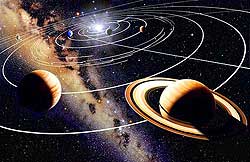 How does the Macroevolution work? Macroevolution assumes there is no outside intelligence involved in the process of life’s existence. The main factors are chance and environment. Following the explosion of matter from nothing, into the universe (Big Bang), the universe expanded outward. Large gaseous clouds of matter condensed into stars and collected into galaxies. Around our star, the sun, formed planets composing our solar system, the planet earth, had the right mixture of environmental factors conducive to life. In a pond of water, a primeval soup,
How does the Macroevolution work? Macroevolution assumes there is no outside intelligence involved in the process of life’s existence. The main factors are chance and environment. Following the explosion of matter from nothing, into the universe (Big Bang), the universe expanded outward. Large gaseous clouds of matter condensed into stars and collected into galaxies. Around our star, the sun, formed planets composing our solar system, the planet earth, had the right mixture of environmental factors conducive to life. In a pond of water, a primeval soup,
the right collection of chemicals and environment formed protein molecules. These molecules later would form into more complex protein molecules. With the right environment and time, random collections of chemicals became living matter, a one-celled organism. With natural selection and mutation, this first cell was able to multiply. This cell became the basis of all future life forms.
The first life like all living matter to follow is made of carbon-based molecules with its genetic blueprints encoded in DNA. The cell had the ability to adapt to its environment through natural  selection (Microevolution)[3] . However, in order for this cell to transition to a more complex form, what is the mode of operation? Since there is no outside intelligence involved, (According to the theory of macroevolution) how does a one cell living organism obtain additional information? The problem this first living cell would have to overcome in the evolution of itself into
selection (Microevolution)[3] . However, in order for this cell to transition to a more complex form, what is the mode of operation? Since there is no outside intelligence involved, (According to the theory of macroevolution) how does a one cell living organism obtain additional information? The problem this first living cell would have to overcome in the evolution of itself into
The Macroevolution Theories
Gradualism
Gradualism calls for an organism to change at a very slow pace by the process of natural selection and random micro-evolutionary mutations at the genetic level, which would gradually lead to the emergence of a new life form.[1]
Punctuated Equilibria
This theory attempts to find a solution to the lack of transitional forms. It demands that life forms remain within their own genetic limits for very long periods of time (Stasis), until environmental pressures force to “burst forth” (sudden punctuations) into new life forms. [2]
Theistic Evolution:
Theistic macroevolution believes God is the cause behind life on the earth, but that He uses macroevolution to bring about new life forms and eventually the human race. This theory was developed by theists who thought that macroevolution had some academic merit.
Many theistic macroevolutionists who believe in gradualism believe that bringing God into the model relieves them of the nagging problem of the need for an intelligent cause.[3]
What is mutation?
Genetic mutation or transmutation is the method one species transitions to another species in macroevolution via its genetic blueprint.
?xml:namespace prefix = v ns = "urn:schemas-microsoft-com:vml" /--> 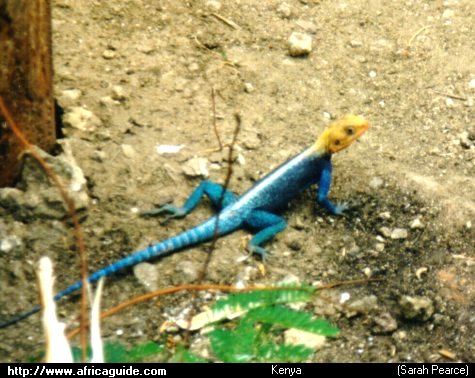
[pk1] The transition of life from lizard to eagle according to those who believe in Macroevolution is the result of a series of mutations and natural selection. Additional information is introduced into the living system’s genetic blueprint. This mutation followed by the natural selection, selects those aspects that are beneficial, allowing “upward” mutation. This “new” genetic information is passed to following generation. These transitional forms are the precursors of today’s life forms. However, the fossil record of these forms is non-existent. Dr. Etheridge from the British Museum commented on this lack of transitional forms,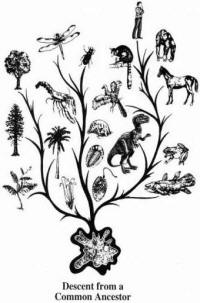
"Nine-tenths of the talk of evolutionists is sheer nonsense, not founded on observation and wholly unsupported by facts.
This museum is full of proofs of the utter falsity of their views. In all this great museum, there is not a particle of evidence of the transmutation of species." [1]
Natural Selection (Microevolution)
Microevolution is distinct from macroevolution no mutation is involved. Microevolution or adaptation uses the genetic variety already in the system of the living organism. For example, within every person is a gene code with genetic potential. If a 7-foot woman man married, a 5-foot man there is a certain probability that if they had 100 children a certain percentage will be 7 foot and 5 foot. However, zero probability that they will develop wings. In order for the couples children to develop wings new genetic information needs introduction into their genetic code. Since there is no outside intelligent source for this information, mutation is the only viable method. This is the difference between microevolution and macroevolution. Darrel Kautz, author of the Origin of Living Things comments on this distinction.
"People are misled into believing that since microevolution is a reality, that therefore macroevolution is such a reality also. Evolutionists maintain that over long periods of time small-scale changes accumulate in such a way as to generate new and more complex organisms ... This is sheer illusion, for there is no scientific evidence whatever to support the occurrence of biological change on such a grand scale.
In spite of all the artificial breeding which has been done, and all the controlled efforts to modify fruit flies, the bacillus escherichia (E-coli), and other organisms, fruit flies remain fruit flies, E-coli bacteria remain E-coli bacteria, roses remain roses, corn remains corn, and human beings remain human beings." [1]
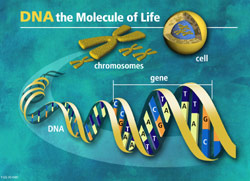
This difference between microevolution and macroevolution is a point of confusion for many. Artists produce pictures, which are not justified by facts but based on imagination. These pictures are then confused with Microevolution, based on science. Adaptation within species is not a disputable issue, but is observable. Macroevolution is not observed anywhere in the fossil record. Darwin trip on the beagle documented microevolution not macroevolution.
Isolated in the Galapagos Island, Darwin discovered finches that had much longer beaks than those found off the island. His assumption was that evolution was changing this species. However, these finches remained finches. Princeton professor Peter Grant completed an 18-year study of the finches on this island. He concluded that during drought years, the finches with shorter beaks died off because with a limited supply of seeds, only those that could reach the grubs living under tree bark could survive. With limited resources on a small island, these finches could not migrate to find food.  We clearly observe natural selection, but not macroevolution. However, it is not a permanent change. The finch offspring with shorter beaks prospered during seasons of plenty. Natural adaptation is the function of microevolution. There are three plainly observable principles to microevolution.
We clearly observe natural selection, but not macroevolution. However, it is not a permanent change. The finch offspring with shorter beaks prospered during seasons of plenty. Natural adaptation is the function of microevolution. There are three plainly observable principles to microevolution.
1. A trait will alter because of a stimulus.
2. The trait will return to the norm if left to nature or returned to its original conditions.
3. No new information is added to the DNA.
One of the best examples of the creation of macroevolution evidence is the story of Piltdown-man used in the scopes monkey trial. (See Below)
The Problems with Macroevolution
There are severe problems with macroevolution as demonstrated in the illustration. Macroevolution ultimately argues that man came from rock. With no transitional fossils, and mathematically probability rendering evolution impossibility those holding such a view are operating under blind faith with little logic behind the position.
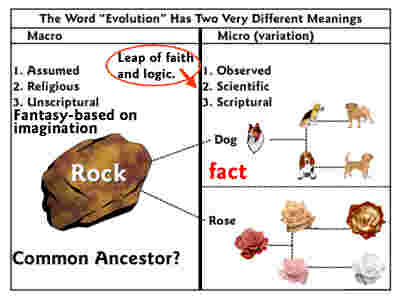
- Complexity of Life
Describing how a theory works and examining its probability are two separate issues.
Each protein molecule is a particularly organized structure composed of about twenty different amino acids, and each amino acid is made up of four elements hydrogen, oxygen, nitrogen and carbon (in two cases a sulfur atom is also present).
These complex systems are all, in the case of every known organism, reproduced and assembled on the basis of the “instructions” built into the DNA molecular system. DNA (deoxyribonucleic acid) is composed of six simpler molecules; these consist of four bases, the arrangement of which specifies the message, made up of nitrogen, oxygen, hydrogen and carbon, along with a deoxyribose sugar molecule and a phosphate molecule which hold the bases in place.
The DNA molecule not only has information required for the synthesis of the specific protein molecules needed by the cell, but also that needed for its own replication. Thus, reproduction and inheritance depend directly on this remarkable molecule, as organized differently and specifically for each kind of organism.
Thus, the problem of abiogeneis devolves upon the method by which the first replicating system evolved. The insuperable barrier; however is that DNA can only be replicated with the specific help of certain protein molecules (enzymes) which, in turn, can only produced at the direction of DNA. Each depends on the other and both must be present for replication to take place.[1]
- Parallel Evolution
Yet, somehow, if the evolution model is valid, wings have “Evolved” four different times (in insects, flying reptiles, birds and bats) eyes have “evolved” independently at least three times.
Salisbury has recently commented on this remarkable fact as follows:
“My last doubt concerns so-called parallel evolution…Even something as complex as the eye has appeared several times; for example, in the squid, the vertebrates, and the arthropods. It’s bad enough accounting for the origin of such things once, but the thought of producing them several times according to the modern synthetic theory makes my head swim.”[2]
- Genetic Mutations
Mutation is the most important component in macroevolution; this is the mechanism to produce the required upward progress in complexity. There are serious problems with mutations.
- Mutations are random, not directed.
“It remains true to say that we know of no way other then random mutation by which new hereditary variation comes into being, nor any process other than natural selection by which the hereditary constitution of a population changes from one generation to the next.”[3]
- Mutations are rare
“It is probably fair to estimate the frequency of a majority of mutations in higher organisms between one in ten thousand and one in a million per gene per generation”[4]
- Good Mutations are very, very rare.
“But mutations are found to be of a random nature, so far as their utility is concerned. Accordingly, the great majority of mutations, certainly well over 99%, are harmful in some way, as is to be expected of the effects of accidental occurrences”[5]
- The Net Effect of All Mutations is Harmful
“The large majority of mutations, however, are harmful or even lethal to the individual in whom they are expressed. Such mutations can be regarded as introducing a ‘load’ or genetic burden, in the pool. The term genetic load was first used by the late H.J. Muller who recognized that the rate of mutations is increased by numerous agents man has introduced into his environment, notably ionizing radiation and mutagenic chemicals” [6]
- Mutations affect and are affected by many genes.
It now appears that each gene affects many characteristics and every characteristic is controlled by many genes.
“Moreover, despite the fact that a mutation is discrete, discontinuous effect of the cellular, chromosome or gene level, its effects are modified by interactions in the whole genetic system of an individual.”[7]
4. Improbability
1. Probability of a complex system arising instantly by chance.[8]
Assume a sea of freely available components, each uniquely capable of performing a specific useful function. What is the probability that two or more of them can come together by chance to form an integrated functioning organism?
As long as the number of components in the organism is small, the chance association in this way is a reasonable possibility. For example, consider two components, A and B. If they happen to link up in the form A-B, say the combined system will work, but B-A will not work. There is a ½ probability of success.
If there are 3 components, A,B, and C there are six possible ways these can link up, ABC, ACB,BAC, BCA,CAB, and CBA. Since it is assumed that only one of these will work there is a 1/6 probability of success
The more the components the less the probability, consider, for example an organism composed of only 100 integrated parts. Remember that each of these parts must fulfill a unique function in the organism and so there is only one way in which these 100 parts can link up, the probability of a successful chance linkage is only one out of 10158. (10 with 158 “zeros”)
Research sponsored in part by NASA has shown that the simplest type of protein molecule that could be said to be “living” is composed of a chain of at least 400 linked amino acids, and each amino acid is a specific combination of four or five basic chemical elements.
2. Probability of Synthesis of DNA Molecule[9]
The problem discussed is oversimplified. A simple linked protein molecule, or any other such system, could never reproduce itself. In the world of living organism, the phenomena of reproduction and inheritance are always directed by the DNA molecule. The evolution of life therefore must have involved somehow the accidental synthesis of the first such DNA molecule. Frank Salisbury, who is himself an evolutionary biologist, discusses this riddle as follows:
Now we know that the cell itself is far more complex than we had imagined. It includes thousands of functioning enzymes, each one of them a complex machine itself. Furthermore, each enzyme comes into being in response to a gene, a strand of DNA. The information content of the gene (its complexity) must be as great as that of the enzyme it controls.
A medium protein might include about 300 amino acids. The DNA gene controlling this would have about 1000 nucleotides in its chain. Since there are four kinds of nucleotides in a DNA chain, one consisting of 1000 links could exist in 41000=10600. This number is completely beyond our comprehension.
The Design Theory:
The theory of creation as opposed to evolution sees the “First cause” of the universe as the designer of life. There are two views of the creation theory; Progressive and Young Earth.
Progressive Model
The progressive model teaches that God created life in stages that parallel the days of creation. The days in creation were not literal days, but successive periods.
|
Stages |
Genesis Event |
Verses |
Science/Paleontology |
|
1-2 |
Creation of the space-time universe |
1-5 |
Big Bang of cosmology (light bursts forth from darkness) |
|
2-3 |
Earth formed/water begins to condense/global sea emerges/atmosphere(expanse) created |
6-8 |
Volcanic activity ends/Earth cools/ atmosphere forms over the sea (troposphere-greenhouse effect) |
|
3-4 |
Dry land created/Earth-moon system created/atmosphere becomes transparent (single-celled plant life created by now) |
4,9-10 |
Origin of double planet system(theory of the origin of the moon from the Earth would create a basin in the earth for water to gather to one side) |
|
4-5 |
Creation of sea animals(multicellular to amphibians/reptiles/winged animals) creation of “Great reptiles” (the largest reptiles are dinosaurs) |
14-19 |
Cambrian explosion/age of fish (array of multicellular animals having the body plans of virtually all creatures that now swim, fly or crawl throughout the world.) |
|
5-6 |
Creation of land animals(domesticated livestock, non-domesticated-wild) creation of mammals/human life |
24-27 |
Age of amphibians/reptiles
Age of mammals/humanity |
|
|
|
|
|
Also keep in mind that there are many ramifications for our beliefs/worldviews (see above short video)
![]()
The creation of the universe is a supernatural event. Matter, space and time exploded into existence at God’s creation of the universe.

